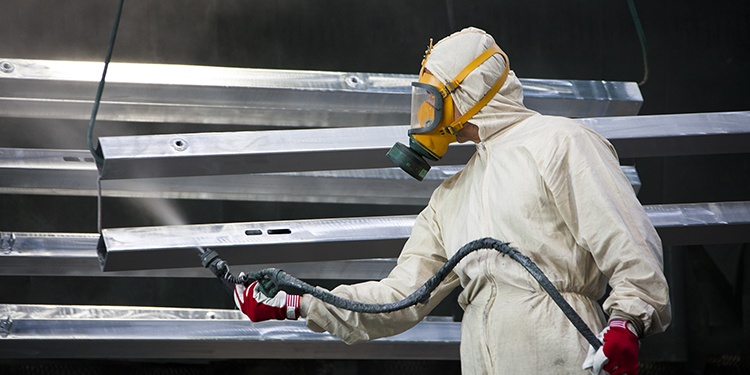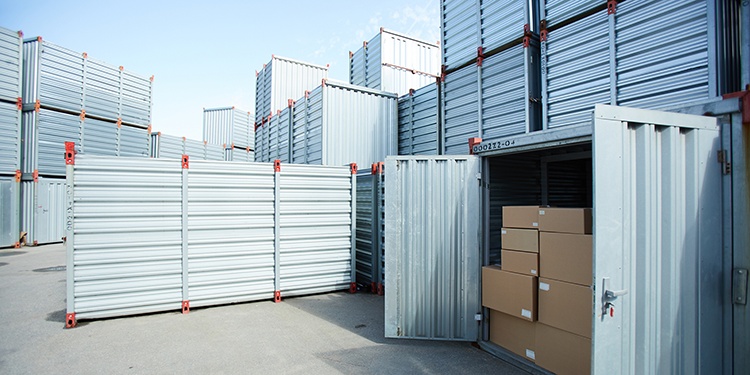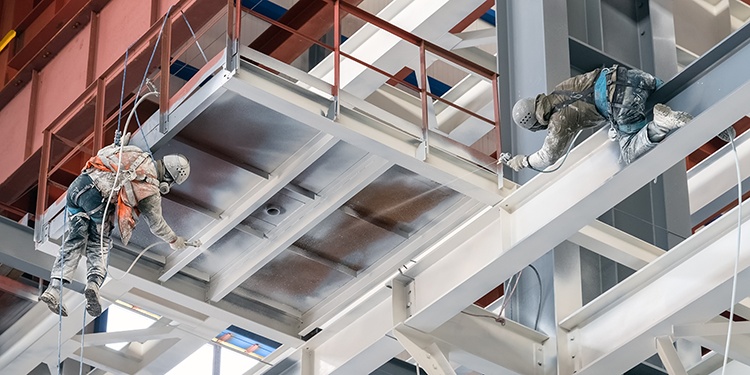The Ins and Outs of Direct
Painting metal has always proved to be more challenging than other substrates. Not all coatings are compatible with metal, this is largely a result of surface tension. Regular coatings don’t stick to metal as well as they do to surfaces like wood or gypsum. Further, metal surfaces can oxidize and rust, causing complicated safety and design challenges.
As a result, it is important to consider the right strategy before painting. To coat metal effectively, applicators should take two things into consideration: surface preparation and the type of paint that is being used.

Direct to metal (DTM) paint is a protective coating that has been designed specifically for this purpose. As the name implies, this type of coating is applied straight to a metal substrate.
Because of the added challenges associated with painting on metal, even advanced technology such as DTM paint may inspire some questions among its users. The following article discusses these specific questions to help alleviate some of the common concerns applicators may encounter.
Specific questions that are discussed in this article:
What is DTM Paint?
DTM is very well characterized by its name. This type of coating is to be applied directly to a metal substrate, giving the painted structure a nice architecturally pleasing look and protection from weathering forces. Further, this coating type requires minimal surface preparation and acts as both a primer and a topcoat.
DTM paints are specifically engineered to be compatible with metal to alleviate many of the issues applicators encounter when trying to cover metal with standard coatings. DTMs also serve many practical uses within projects.
There are several types of DTM paints that are currently on the market, including:
- Waterborne Acrylic DTM: This type of DTM contains low VOCs making it environmentally friendly and non-flammable. It applies to both interior and exterior environments.
- Solvent Based DTM: This type of coating is known for being slightly easier to use. However, it tends to contain higher VOC making it less environmentally safe. Also, solvent based paints tend to be flammable.
What can DTM paint be used for?

DTM paints can be applied to both interior and exterior metal surfaces. If the coating is a water-based acrylic paint, it can be used on various metals because of its strong adhesive properties. Further, it is resistant to water absorption and outside weathering, adding increased protection to any structures exposed to external environments.
Besides providing an architecturally pleasing finish to metal structures, another appeal of DTM paints includes protecting metal from rust and corrosion. This dual-purpose and ease of use contribute to the current popularity of similar coatings.
Application of DTM can include structures such as:
- Storage containers
- Machinery
- Tanks and towers
- Pipes
- Railings
- Doors and walls
The possibilities are not limited to the items listed above. DTM paints can be applied to nearly any standard metal surface. Some of the more common compatible substrates include: steel, concrete, masonry, and aluminum.
The applications of DTM paint can be very diverse within the context of painting and protecting metal surfaces. In general, DTM paints boil down to two primary purposes: To add an aesthetically pleasing coating for your substrates, and to protect against external environments and increase the longevity of metal structures.
Does DTM paint need a primer?
To elaborate on a characteristic of DTM paint that gives the coating its name, this type of paint does not require a primer. DTM is formulated to be applied with minimal surface preparation and acts as a primer/topcoat combination.
This formulation saves applicators time, money, and resources as only one product is required for the proper application of DTM on metal. With this two-in-one approach, less paint is needed, and these projects are completed faster.
Finding the right primer for your paint can add to the application hassle. DTM paint eliminates the need to search for a high-quality coating compatible with the topcoat of choice.
Benefits of DTM Paint
So, what are the benefits of DTM paint? These bullets break down everything an applicator can expect from a DTM coating.
 Reduces costs
Reduces costs
 Saves time
Saves time
 Diverse application
Diverse application
 High degree of durability
High degree of durability
 Rust & corrosion protection
Rust & corrosion protection
 Tolerant of diverse weather conditions
Tolerant of diverse weather conditions
In general, this technology brings significant benefits to construction projects. As a tool specifically designed for professional maintenance, it delivers on all of the gains listed above.
How do I use DTM paint?
Paint & Surface Preparation
DTM coatings may ease the application process, but there are still a few critical steps to keep in mind when coating a surface.
As a two-in-one coating, surface preparation is significantly reduced because applicators get to skip the primer application step. However, for the full effect of DTM and an aesthetically pleasing result, it is important to make sure that the substrate receiving the coating is prepped correctly.
The surface must be cleaned before application to ensure adequate adhesion. This cleaning would include getting rid of foreign materials like oil, grease, dirt, or loose rust. Several strategies may be employed to achieve this cleanliness.
A wire brush can be used to remove any rust or flaking paint from the substrate’s surface. The remaining dirt or foreign material can be removed simply by wiping it down with a damp cloth. Meanwhile, acetone can be used to remove substances like grease or oil.
Before beginning the application process, it is important to mix the paint.

The Application Process
With a freshly cleaned surface and thoroughly mixed paint, the coating is ready to be applied. Most DTMs are applied by brush, roller, or spray. However, the spray method is the recommended method of application because it is easier to use on metal. Tizbi Technologies recommends using a 0.015” sprayer tip and adjusting the pressure to 1500 psi.
It is important to keep track of the recommended application rate and thickness of the used product. Thickness can significantly affect the resulting coating. However, keep in mind that the actual rates can vary based on the application method and the substrate in use.
Drying time can be influenced by factors like coat thickness, temperature, humidity, and ventilation. When finished, tools and other materials can be easily cleaned with water.
Overall, the preparation, application, and resulting clean up of a DTM paint is much easier than alternative coating methods. Collectively, the use of DTM saves the applicator a lot of resources and time.
TizbiTec DTM Paint
Looking for a reliable DTM paint for your metal structures? Checkout TizbiTec DTM paint. This product offers all of the attributes described above, providing your surfaces a nice semi-gloss finish and protection from external forces.
Tizbi Technologies delivers trustworthy products for the professional construction market that are durable and high performing. Count on our products to deliver exactly the result that you were looking for.
Please get in touch with our team.





